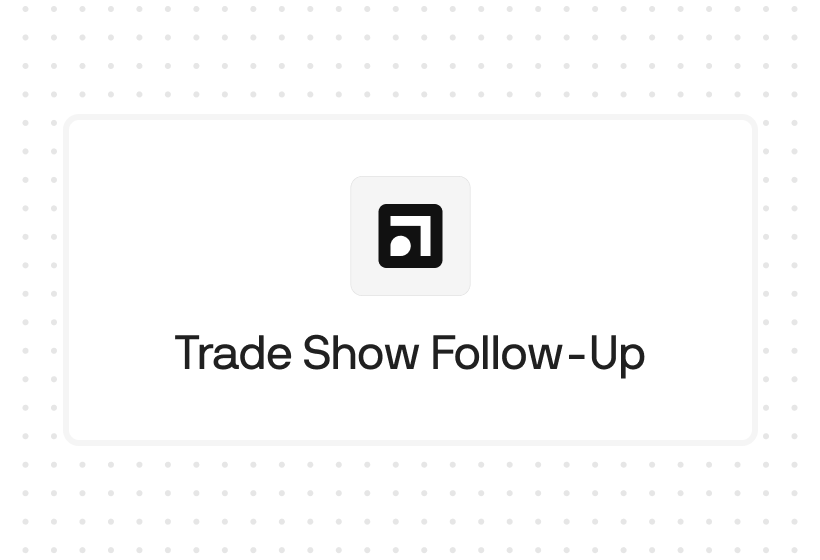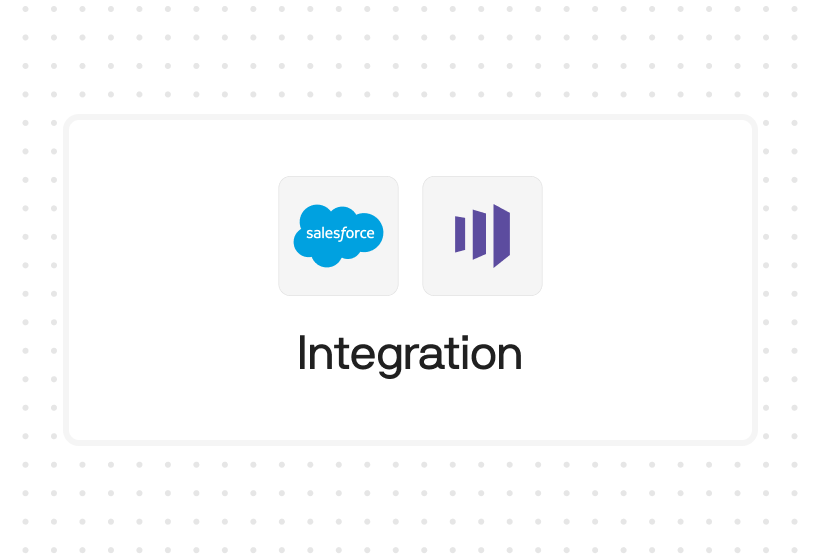Try Default

See how revenue teams automate revenue operations with Default.

Key Takeaways
Key takeaways:
- A RevOps framework aligns your GTM teams—marketing, sales, and customer success—around shared goals, systems, and data.
- The most effective frameworks are built on four strategic pillars: people, process, data, and technology.
- Leading models like Clari, Gartner, and Forrester offer different approaches to building scalable revenue operations.
- A strong RevOps framework reduces churn, improves forecasting, and increases pipeline velocity.
- Execution is often the hardest part—tools like Default help unify workflows and accelerate RevOps impact.
Revenue leaders today face a hard truth: GTM complexity is outpacing coordination. Marketing generates leads the sales team can’t prioritize. Sales closes deals that customer success can’t retain. Forecasts feel more like guesswork than strategy.
This is why RevOps frameworks are no longer optional. They’re the blueprint for aligning teams, tools, and data around a unified revenue engine—eliminating silos and building real scalability.
And the business case is undeniable:
- Companies implementing RevOps see a 100–200% increase in marketing ROI and a 30% drop in GTM expenses (Boston Consulting Group)
- Sales teams in RevOps-aligned orgs report a 59% win rate boost and a 53% increase in net-dollar retention (HubSpot)
- By the end of this year (2025), 75% of high-growth companies will be using a RevOps framework (Gartner)
This guide breaks down what a RevOps framework is, why it matters more than ever, and how to choose the right one for your business. You’ll explore four common frameworks (with examples), understand the pillars they’re built on, and learn how to implement your own—from structure to stack.
Let’s get into it.
What is a RevOps Framework?
A RevOps framework is a structured approach to aligning your go-to-market teams—marketing, sales, and customer success—around a shared set of processes, tools, and goals to drive predictable revenue growth.
It’s not a one-size-fits-all model. The right framework depends on your company’s structure, growth stage, and GTM strategy. But in every case, a RevOps framework provides the clarity and coordination needed to scale revenue efficiently by making execution repeatable, measurable, and aligned from top to bottom.
The Four Pillars of the Revops Operating Model
At its core, RevOps is an operating model—not a standalone function—designed to align revenue-driving teams around shared goals, systems, and data. Every effective RevOps strategy is built on four key pillars that ensure execution is consistent, visible, and scalable:
- End-to-end engagement supporting the entire customer lifecycle
- Integration across GTM functions—sales, marketing, and customer success
- Observable systems and processes and visibility into execution and outcomes
RevOps emphasizes holistic strategy, team alignment, real-time revenue intelligence and analytics, technology integration and optimization, and continuous improvement. It rests on four pillars: people, process, data, & technology.
People
RevOps starts and ends with the people managing it. Not only does your RevOps team require a range of hard skills to operate effectively—marketing, sales, finance, data analytics—but also a culture of integration and collaboration across all functions.
Depending on your business size, you may have a dedicated RevOps team or distribute RevOps responsibilities among existing GTM team members.
Process
RevOps is committed to integration and end-to-end management, ensuring everyone is rowing in the same direction and materially contributing to driving new revenue. Uniform processes are critical to building accountability and trust among your team and realizing RevOps benefits.
Data
Central to RevOps success is data, both external (prospects and customers) and internal (team and campaign performance). Without data, it’s impossible for RevOps teams to align GTM efforts around a single source of truth.
Technology
RevOps thrives on automation, which enables teams to not only monitor but proactively manage the whole revenue cycle. This is why centralized technology stacks are critical to RevOps success—it’s difficult to automate seamlessly when you’re managing a bunch of point solutions.
Goals of a Revops Framework
While the structure of your RevOps framework may vary, the ultimate goals remain consistent: to align teams, improve revenue predictability, and drive smarter growth. By bringing together people, processes, data, and technology under one coordinated strategy, RevOps helps organizations move from reactive to proactive revenue management.
Here are the key outcomes most teams aim to achieve with a RevOps framework:
- Team alignment across the GTM engine
Break down silos between marketing, sales, and customer success with shared goals and workflows. - Revenue visibility and predictability
Use centralized data and unified reporting to improve forecasting and performance tracking. - Faster lead qualification and conversion
Streamline handoffs and automate routing to move leads through the funnel more efficiently. - Improved customer retention and expansion
Align lifecycle engagement across teams to reduce churn and increase customer value. - More efficient use of tech and resources
Eliminate tool redundancy and manual processes to reduce operational waste and scale smarter.
4 Common Revops Frameworks
Different RevOps organizations will organize these four pillars differently, depending on the specific needs of the business. Let’s quickly take a look at four common RevOps frameworks so you can see what this looks like in practice.
For a more comprehensive deep-dive into these four RevOps frameworks, click here.
Waterfall Framework
The straightforward, linear waterfall framework involves passing leads and opportunities through sequential, pre-defined stages. While simple and straightforward, it often fails to account for the complexities of modern B2B buying. The result is often lead stagnation and a process that doesn’t align with customer realities.
Agile Framework
Much like its counterpart in product development, Agile RevOps emphasizes flexibility, cross-functionality, unified performance metrics, and interactive planning & execution. While this approach is flexible enough to map to complex customer journeys, it’s often challenging to implement without the proper technology, people, and processes in place.
Product-led Growth (PLG) Framework
Product-led growth (PLG) RevOps is a SaaS-specific framework that emphasizes the product’s role in driving leads and sales. While highly scalable, it requires technological complexity and carries a high risk of churn.
Account-Based Everything (ABX)
Account-Based Everything (ABX) RevOps unifies Account-Based Marketing (ABM) and Sales (ABS) under one roof to provide a framework for selling high-value accounts. It can deliver a high ROI, but requires significant upfront investment and tight cross-functional alignment to succeed.
Examples of Top RevOps Frameworks
Beyond theoretical models, many leading organizations use structured RevOps frameworks developed by industry leaders to scale revenue predictably and reduce GTM friction. Below, we’ll walk through standout approaches from Gartner, Clari, and McAlign—each with unique principles that optimize revenue operations at different stages of growth and complexity.
Clari’s Three-phase RevOps Framework
Clari structures its RevOps methodology around three core phases—Engage, Execute, and Expand—each designed to optimize a specific stage of the revenue lifecycle. This framework is especially well-suited for organizations looking to connect marketing, sales, and customer success through a unified, metrics-driven approach.
- Engage
The goal here is to generate high-quality pipeline by driving awareness and interest within target segments. Teams focus on account engagement, pipeline creation, and coverage for future quarters. Common metrics include pipeline acceleration, pipeline quality, and engagement within target accounts. - Execute
Once the pipeline is established, this phase centers on converting it into revenue. Clari emphasizes efficiency and predictability, with a focus on sales velocity, win rates, deal progression, and forecast accuracy. - Expand
Finally, Clari’s framework prioritizes growth within existing accounts. This includes retention, upsell, and cross-sell strategies, tracked through metrics like expansion revenue, customer satisfaction, and product adoption.
By aligning teams and KPIs across each phase, Clari’s framework helps businesses move from reactive revenue management to a proactive, full-funnel strategy.
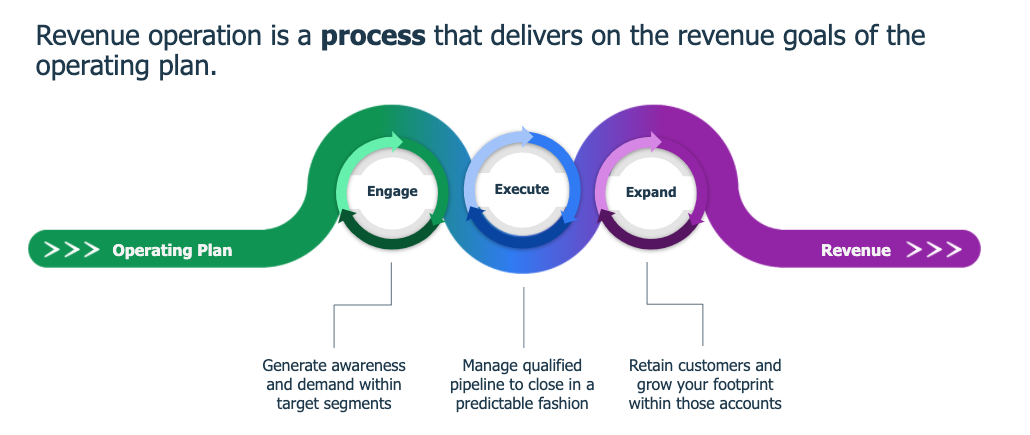
Source: Clari
Gartner’s RevOps maturity model
Gartner frames Revenue Operations as a maturing discipline that evolves through three distinct stages: Developing, Intermediate, and Advanced. Rather than prescribing a one-size-fits-all framework, Gartner’s model helps organizations assess their current RevOps maturity and identify the next steps for scaling impact.
- Developing
Revenue operations is in its early stages. GTM functions operate in silos with limited process standardization, fragmented tools, and minimal cross-team visibility. - Intermediate
Teams begin to unify around shared metrics and workflows. Data becomes more centralized, and early automation starts improving GTM efficiency. - Advanced
RevOps functions as a strategic growth engine. GTM teams are fully aligned, systems are integrated, and leaders use data to make proactive, revenue-driving decisions.
Gartner’s model is especially useful for diagnosing operational gaps and building a phased roadmap toward RevOps excellence.
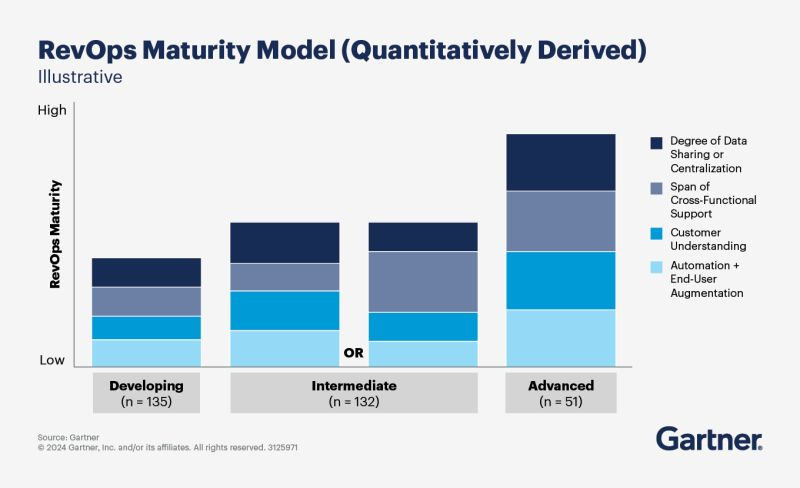
Source: Gartner for Sales/ LinkedIn
Forrester’s customer-obsessed RevOps strategy
Forrester’s approach to RevOps is rooted in a simple idea: growth follows when you organize around customer value,not just internal efficiency. Their framework emphasizes aligning data, processes, tech, and talent to support the full customer lifecycle, not just top-of-funnel motion.
It’s built around five interconnected elements:
- Customer value creation
Every RevOps initiative is designed to drive better outcomes for the customer. The focus shifts from just hitting internal KPIs to improving customer experience and long-term loyalty. - Unified data and insights
Cross-functional data is centralized to provide a 360-degree view of the customer. This enables better forecasting, personalization, and decision-making across GTM teams. - Optimized processes
Forrester stresses the importance of standardized, streamlined workflows that eliminate friction and reduce handoff loss across marketing, sales, and customer success. - Integrated technology stack
A cohesive tech stack ensures systems talk to each other—supporting automation, visibility, and better collaboration across the revenue engine. - Aligned talent and org structure
Success depends on having the right skill sets, clear ownership, and team structures that support end-to-end revenue outcomes—not just departmental wins.
Forrester’s framework is especially relevant for mid-market and enterprise orgs evolving from siloed operations toward a more holistic, customer-led revenue model.
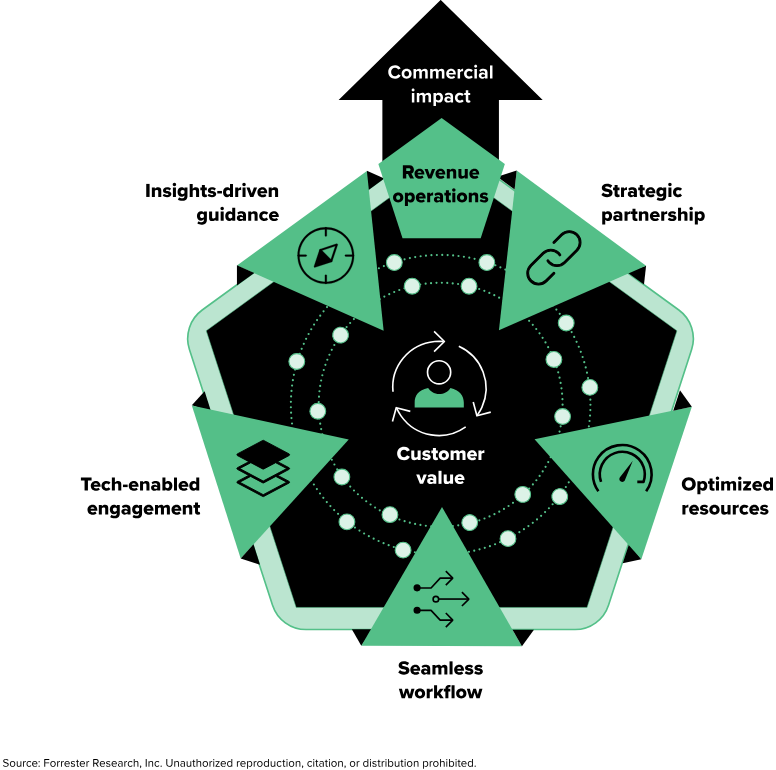
Source: Forrester
How a RevOps framework supports retention and reduces churn
Recurring revenue is the engine of predictable growth—and customer churn is the leak that quietly drains it. Reducing churn isn’t just about customer success; it’s a RevOps priority that directly impacts profitability, retention, and long-term customer value.
An effective RevOps framework helps you spot churn risk early by unifying lifecycle data, automating health scoring, and aligning teams around proactive engagement. When GTM teams share insights and workflows, you can identify friction points, intervene faster, and build scalable retention strategies that protect your bottom line.
The result? More consistent revenue—and fewer preventable losses.
Steps to implement a RevOps framework
Building a RevOps framework isn’t just about choosing the right model—it’s about aligning your GTM engine around a unified strategy, shared metrics, and scalable systems that actually work in practice.
Audit your current GTM alignment
Start by mapping your current-state operations. Where do handoffs break down? Which teams operate in silos? How clean and accessible is your data? This audit helps uncover friction, duplication, and missed revenue opportunities—and shows where RevOps can unlock the most immediate value.
Define shared goals and KPIs
RevOps only works when everyone’s rowing in the same direction. Define shared outcomes across marketing, sales, and success—such as pipeline velocity, lead-to-win rate, or net revenue retention—and agree on how progress will be measured. This creates alignment and accountability across teams.
Select the right RevOps framework
Not every model fits every business. Choose a framework—Agile, ABX, PLG, or another—that reflects your sales cycle, product motion, and org structure. Your choice should support how your buyers move through the funnel, not just how your teams are organized.
Centralize your data and tech stack
Fragmented systems lead to slow decisions and inconsistent execution. Connect your CRM, marketing automation, sales engagement tools, and customer data into a single ecosystem. The goal is a shared source of truth that supports clean handoffs, accurate reporting, and smarter planning.
Assign ownership and accountability
Every part of the revenue process needs clear owners. Who’s responsible for lead scoring? Routing? Forecasting? Without defined roles and escalation paths, even the best-designed framework will break down. Document responsibilities and keep them visible across functions.
Optimize and scale through automation
Once alignment is in place, automate where possible—lead routing, qualification logic, meeting scheduling, pipeline updates. This reduces human error, saves time, and lets your teams focus on strategy, not process maintenance. It’s how RevOps shifts from reactive to proactive.
This is also where many teams get stuck—execution across disconnected tools slows progress. Default helps by unifying segmentation, routing, qualification, and scheduling into one system, so you can move faster from strategy to scale.
How to optimize revenue operations for business growth
Regardless of which RevOps strategy you implement from the options above, here are some actionable steps to implement it across your organization.
1. Choose your RevOps framework & establish goals
The first step in building a RevOps framework is to choose which one to adopt. Then you can quickly identify the key metrics and targets needed to drive growth and achieve your goals.
While revenue is the ultimate goal, other intermediate objectives are important to measure ongoing progress. These include increasing marketing-sales alignment, streamlining resources, accelerating customer acquisition cycles, reducing churn, and automating GTM systems.
Over time, RevOps will help you improve in all these areas. Right now, however, it’s important to focus on the areas where you can have the greatest (and fastest) impact, and optimize your strategy around that focused goal.
2. Assess & integrate your current teams
Key to RevOps is an integrated, aligned effort among your current teams. Before you can integrate marketing, sales, and success efforts, first you need to identify where those efforts currently sit.
Often, you’ll find gaps between your current capabilities and what you need to implement your RevOps framework. That’s to be expected. Part of your integration efforts includes filling those gaps with new or upskilled people or technologies.
Then, once you have the right teams, it’s vital that they start talking to each other. Clear, open communication is key to GTM alignment. This is especially helpful when you have a common technology stack and data which serves as the organization’s single source of truth.
3. Prioritize data-driven decision making
There are lots of opinions in the market on what good marketing or sales looks like. But if you want to optimize your revenue operations for business growth, decisions must be made through data.
That’s why measuring RevOps metrics is a key part of the process. Because RevOps is a cross-functional strategy, the metrics you track span GTM functions:
- Sales & revenue metrics (e.g. recurring revenue, weighted pipeline value, sales velocity)
- Forecasting metrics (e.g. pipeline predictability and customer acquisition forecast)
- Process & operation metrics (e.g. lead to customer conversion rate, sales cycle length to annual deal size ratio)
- Marketing metrics (e.g. marketing-sourced revenue, CAC & LTV by marketing channel)
- Customer success metrics (e.g. net revenue retention, ACV growth)
- Technology metrics (e.g. system performance, internal adoption rates)
Only with these key metrics at your disposal can you make the decisions necessary to optimize and accelerate your revenue.
4. Focus on continuous improvement
When you execute your RevOps strategy, you’ll quickly figure out whether or not it’s working. If things are moving in the wrong direction, you’ll need to make adjustments quickly, otherwise you’ll waste resources, leak revenue, and stall your GTM success.
That’s why it’s important, no matter which framework you adopt, to regularly review and assess your processes. That way, you know where to make changes so you can drive better results.
Often organizations can’t track their progress because the necessary data is dispersed across their tech stack. The solution: a unified RevOps platform—lead qualification, segmentation, and routing combined into a central tool—that brings all your data together for accurate, real-time analysis.
5. Invest in software built specifically for RevOps use cases
Finally, the agility, integration, and real-time responsiveness of RevOps requires technology built for this use case. A string of point solutions with brittle integrations won’t cut it. Neither will a siloed infrastructure. You need technology built specifically for this use case, otherwise you’ll struggle to handle the demands of successful RevOps management.
For example, Default simplifies RevOps by unifying lead qualification, segmentation, routing, scheduling, and automation into one platform. Users have found an overall 70% reduction in implementation time, 30% average cost savings, and 10 hours saved per week.
To launch your RevOps strategy with a fitting tech stack, see Default in action today.
Optimize your RevOps with Default
Whether you're just getting started or refining an existing approach, a strong RevOps framework can transform how your GTM teams drive growth. But strategy is only half the equation—execution is where most teams hit friction.
Default helps you put your RevOps framework into action, faster. From lead routing to pipeline insights, we centralize your most critical revenue workflows so your teams can move in sync—and scale smarter.
See how Default simplifies RevOps for high-growth teams—book your demo today.
Conclusion

Former pro Olympic athlete turned growth marketer! Previously worked at Chili Piper and co-founded my own company before joining Default two years ago.
Accelerate your growth with Default.
Revamp inbound with easier routing, actionable intent, and faster scheduling








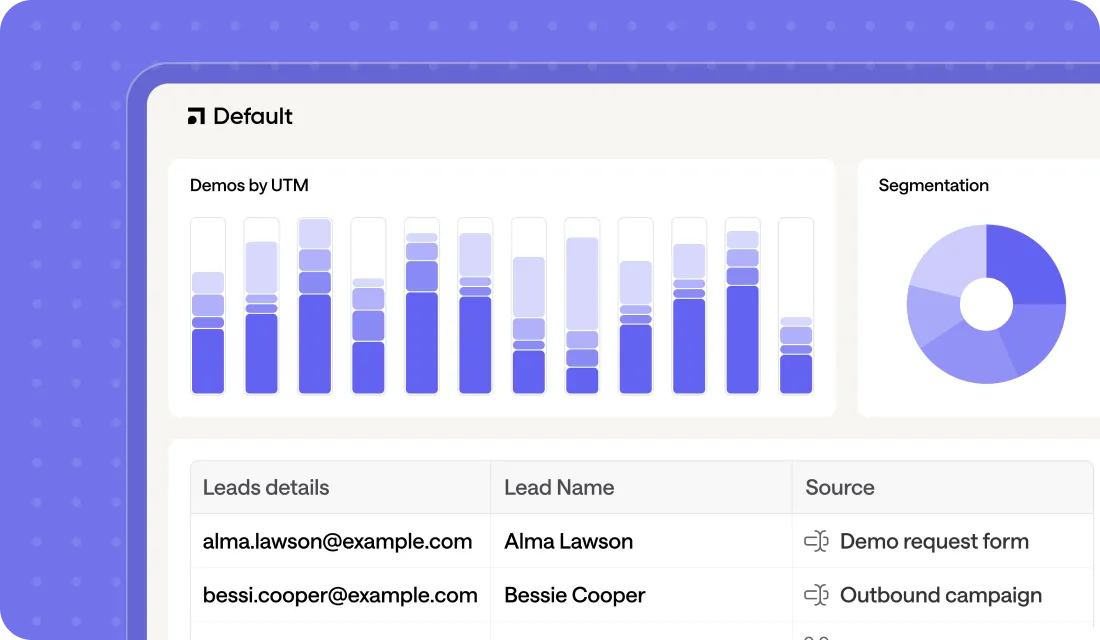
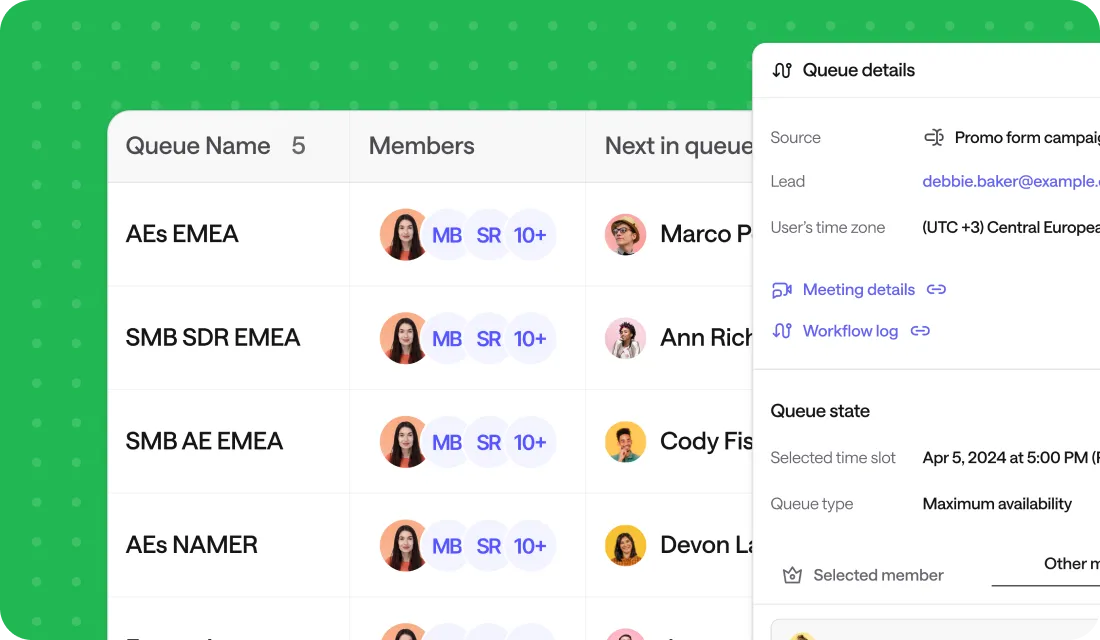


.png)


